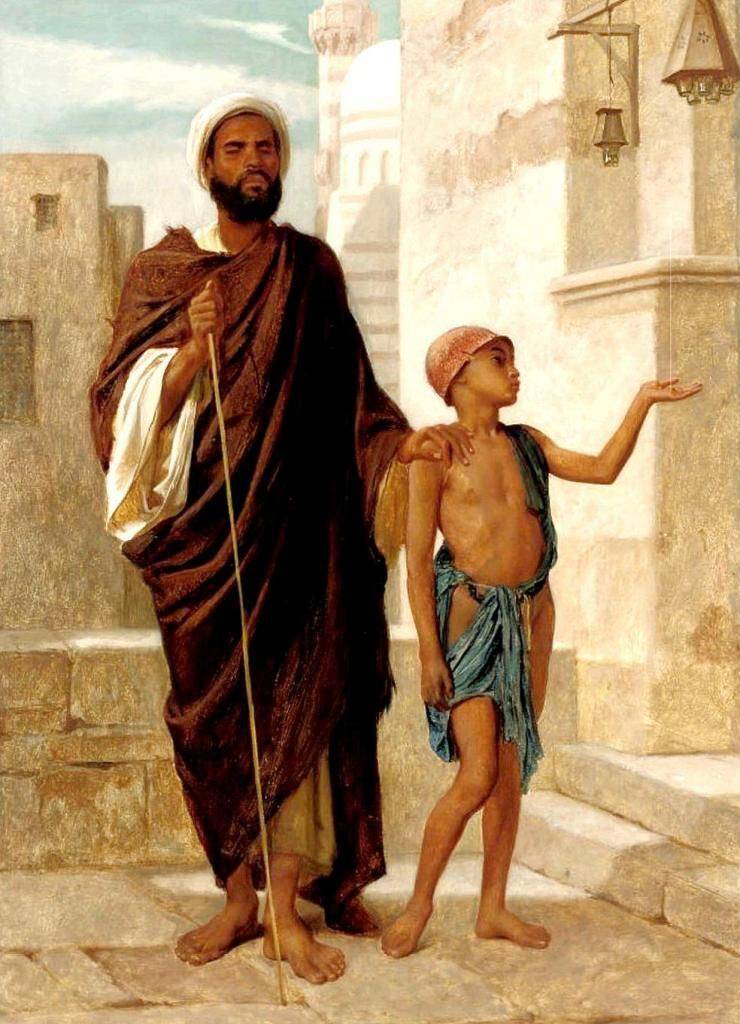
English Artists: Frederick Goodall (1822-1904)

Figure 1.--Fredeerick Goodall made a second trip to Egypt (1870). He painted this oil at that time in Cairo"--'A Helping Hand'. It shows a blind man and a boy begging. Knowing that it was a Goodallwork, we can assume that the clothing depictions are accurate. The boy is clothed in rags and the blind man in standard Arab clothing. Weare not sure what kind of cap the boy is wearing.
|
|
Frederick Goodall was an English artist, but has to be included as one of tghe earliest painter of Egyptian scenes since the Arab conquest (7th century AD). Frederick was born in London, England (1822). His father was steel line engraver Edward Goodall (1795-1870). It is thus no accident that his sons oursued artistic careers. Frederick was educated at the at the Wellington Road Academy. Goodall began paintibg in England and his conventional career and subject matter was recognized by he Royal Academy. He apparently harbored an interest in Egypt. At the time Egypotology was a popular infatuation. He visited (1858) and again after the construction of the Sue Canal. These were not conventional European tours. He traveled and camped with with Bedouinss. Eyptian themes thus became Goodall became best known for painting. He painted both contemporary and historical scenes, including Biblical scenes. The British and European public in the era before photographic magazines were in great demand and the public was particularly interwsted in Egypt. Here the lure of history as well as Chrutian imagery (Biblical scenes) made Goodall's work very popular and he made areat deal of money. The building of the Suez Canal only increased interest in his work. His contemporary work is some historical interst because his travels allowed him to paint with some accuracy nd there were no Egyptian artists because of Islamic prohibitions on depicting people. To achieve acuaracy, Goodall went to the length of bringing back sheep and goats which he could use as models. His travels even lent a degree of accuracy to his historical work. Egyot like most of the Arab world remained kargely unchanged for centuries. Thus street scenes and life style scecene in the 19th century were not greatly different from a millenium earlier or even further back.
HBC

Navigate the Boys' Historical Clothing Artist pages:
[Return to the Main English artist page]
[Return to the Main indvidual G-L artist page]
[Chronology]
[Countries]
[Individuals]
[Styles]
Navigate the Boys' Historical Clothing Web Site:
[Return to the Main Egyptian page]
[Introduction]
[Activities]
[Biographies]
[Chronology]
[Clothing styles]
[Countries]
[Bibliographies]
[Contributions]
[FAQs]
[Glossaries]
[Images]
[Links]
[Registration]
[Tools]
[Boys' Clothing Home]
Created: 11:55 PM 3/25/2012
Last updated: 11:55 PM 3/25/2012



